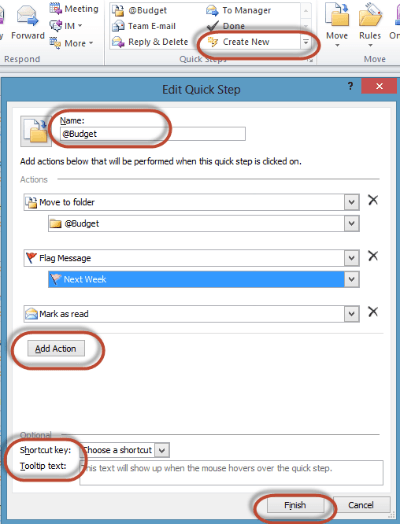

To enjoy this feature to the fullest, we recommend you to make sure to have a back up of Quick Steps, as these steps are not stored or saved in the form of separate files on your system, which in fact makes them easy to back up in Microsoft Exchange and for POP3 users as well. In one of our earlier articles, we have already discussed that Quick Steps includes a variety of steps like Move To, Team Email, Reply & Delete, To Manager and Done but there is more in Quick Steps apart from these steps. We would also like to mention that the Quick Steps Icon or Box is usually visible only when the user is using the Mail Module but it can be used for other features like the Tasks and Calendar Feature of Outlook. In case, you are wondering where to locate the Quick Steps in Office 365, then let us inform you that you will find it right in the middle of the Home Tab of the main Ribbon in the Mail Module. The main reason for people preferring to use Quick Steps in MS Outlook is as we mentioned just a while ago is that it helps reducing efforts gone wasted in doing multi step tasks, as through Quick Steps same tasks can be done in just a single click. Reading this article, you will realize why Quick Steps Feature is not to be missed out while using MS Outlook. The main modification is that with Quick Steps in 2016, you will no longer need to do multiple clicks for certain tasks if you have created a Quick Step for it. Designed to simply a number of tasks, Quick Steps has again been introduced in 2016 version with some modifications. It is indeed one of the best available features of Outlook and the fact that it has always been incorporated in each and every new version of Outlook in itself talks about its popularity and usability.

Quick Steps, as the name suggests can help you take really many quick steps for conducting various tasks in MS Outlook. If you have not learnt about Quick Steps in Ms Outlook, it is time for you to explore this fantastic feature.


 0 kommentar(er)
0 kommentar(er)
